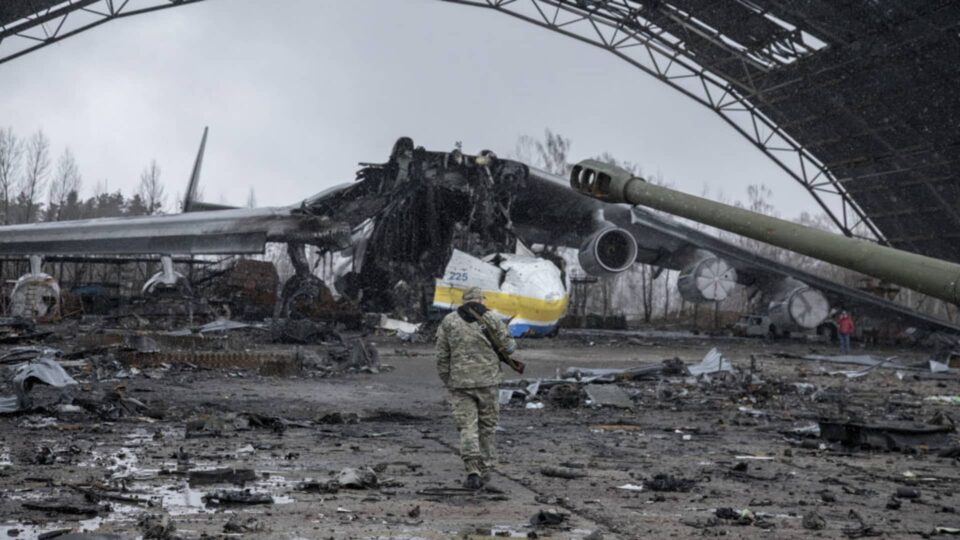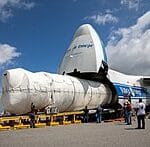Aerospace
Antonov Airlines is shifting to Germany.?

When we think about Antonov, we think of its gigantic aero plane, the An 225 Mariya, which was developed with a lot of hard work and a lot of ambitions by Antonov employees. However, the Russian invasion of Ukraine shattered the Antonov family’s dream, as well as their production and operating sites.
One of the most crucial aspects of every aerospace company is its engineering workforce, which must be protected in order to continue working. Mega Antonov Airlines, which specializes in cargo operations, is considering relocating to Germany. Antonva believes that Leopzig is the ideal location in Germany for continuing to soar and protecting its operational foundation.
ADB has confirmed its plans to relocate to Leipzig-Halle Airport, according to sources. Because their home airport was severely damaged during the Russian invasion, it is no longer usable, making the airline a complete disaster. During the Russian invasion, not only an airport was destroyed, but also An225, An-74, and An-26 aircraft, as well as one An 124 and one An22A.
Leipzig Airport in Germany is a major cargo hub and the headquarters of DHL. Antonov has been operating to and from Leipzig for several years. Given Leipzig’s location in the heart of Europe and its ability to handle high-volume cargo operations, it’s a perfect match.
Airbus and CMA CGM Group sign for four A350F freighters
The five lucky An-124 planes that were outside of Ukraine during the invasion are now flying for the Ukrainian government, NATO/European Union under the SALIS program, and humanitarian missions out of Leipzig. In the following 12 months, Antonov expects to undertake 385 flights with 1,270 landings.
Antonov is likely to transfer its technical and maintenance teams to this facility in order to improve operations. Antonov is soliciting money to redevelop the AN225 Mariya plane. According to the footage, the most forward area of the fuselage is destroyed, which is one of the most essential sections of any aircraft due to the Avionics and Flight Controls instruments. and the right wing was entirely destroyed. It can be rectified, according to certain technical sources, although it may take longer owing to technical configuration changes, the AN 225 will fly again one day. Hopefully, Antonov Airlines will be able to resume normal operations at its German sites.
Boeing Celebrates 60th Anniversary of Chinook First Flight

Aerospace
Boeing Transfers Rocket Stage to NASA, Paving Way for Human Moon Mission

Boeing has achieved a significant milestone by providing NASA with the second core stage of the Space Launch System (SLS) rocket.
This crucial component, crafted at NASA’s Michoud Assembly Facility (MAF), is set to propel the Artemis II crew into lunar orbit, marking humanity’s return to deep space after a 50-year hiatus.
The monumental Boeing-built rocket stage, the largest element of the Artemis II mission, will embark on a journey aboard the Pegasus barge, traveling 900 miles to NASA’s Kennedy Space Center.
Comparison of two legendary aircraft B777x vs B747 aircraft:Click here
Upon arrival, it will be meticulously integrated with other essential Artemis II components, including the upper stage, solid rocket boosters, and NASA’s Orion spacecraft within the iconic Vehicle Assembly Building. This intricate integration process is a vital step toward the eagerly anticipated Artemis II launch, slated for 2025.
“Boeing-built products helped land humankind on the moon in 1969, and we’re proud to continue that legacy through the Artemis generation,” remarked Dave Dutcher, vice president and program manager for Boeing’s SLS program. “Together, with NASA and our industry partners and suppliers, we are building the world’s most capable rocket and paving the way to deep space through America’s rocket factory in New Orleans.”
NASA, Lockheed Martin Reveal X-59 Quiet Supersonic Aircraft:Click here
The delivery of Core Stage 2 marks a significant achievement in the evolution of the SLS rocket. Towering over 200 feet and powered by four RS-25 engines, this core stage, coupled with two solid-fueled booster rockets, will generate a staggering 8.8 million pounds of thrust. This immense power is crucial to launching Artemis II and future missions into the vast expanse of space.
The SLS rocket stands unparalleled in its capability to transport both crew and substantial cargo to the moon and beyond in a single launch. Its extraordinary capacity will facilitate the delivery of human-rated spacecraft, habitats, and scientific missions to destinations including the moon and Mars, ushering in a new era of space exploration.
-

 Travel1 week ago
Travel1 week agoAir India to Expand US Operations with Three New Routes After a Decade
-

 Travel2 weeks ago
Travel2 weeks agoWhy We Should Avoid These Stamps in a Passport
-

 Airlines1 month ago
Airlines1 month agoInvestigations Reveal Fake Chinese Titanium in Boeing and Airbus Jets
-

 Tech4 weeks ago
Tech4 weeks agoChina’s CATL Plans 1,800-Mile Electric Plane Launch by 2027
-

 Airport3 days ago
Airport3 days agoTop 10 Largest Airports in the World by Size
-

 Aerospace4 weeks ago
Aerospace4 weeks agoChina’s Fighter Jets Turn Wings into Autonomous Drones
-

 Airlines4 days ago
Airlines4 days agoAir India Rolls Out A350s for Delhi-New York JFK and Newark Routes
-

 Defence3 weeks ago
Defence3 weeks agoBoeing Enhances Chinook with New Engines and Block II Upgrades at $96 Million









